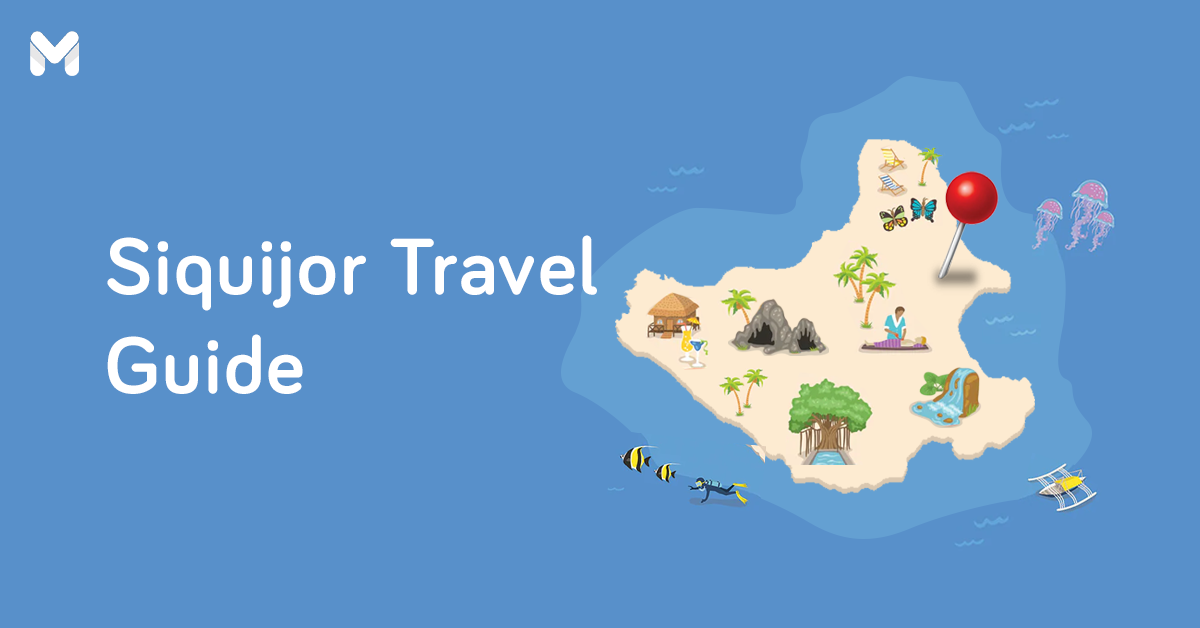The Philippines has a lot to offer when it comes to festivals. The biggest festivals in the Philippines are highly anticipated, and no wonder—they bring locals and tourists together through performances, music, and food.
If you’re looking for a unique and fun festival experience with family or friends, it’s time to plan a trip to these places.
The Biggest Festivals in the Philippines
Aside from its warm, friendly people and breathtaking scenery, festivals in the Philippines are the country’s best tourist attractions. While every town has its own fiesta celebration on various dates, below are some of the biggest festivals you can visit.
Feast of the Black Nazarene

Photo: Philippine Star (Facebook)
- Where: Quiapo, Manila
- When: January 9
What is the biggest festival in the Philippines? One of the biggest festivals in the Philippines happens in Manila every year on January 9. Unlike other Filipino festivals, where you come in the most festive and colorful costumes, the Feast of the Black Nazarene requires you to wear comfortable clothes and shoes.
Millions of Poong Itim na Nazareno devotees flock to Manila to join the parade on a 6.5-kilometer route, ending in the Minor Basilica of the Black Nazarene in Quiapo. The procession alone can take as long as 22 hours because of the number of people who attend this event.
The image of the Black Nazarene, sculpted from mesquite wood, arrived in Manila in the mid-1600s. A Filipino saint carver named Gener Manlaqui was commissioned by the Archdiocese of Manila to make the present-day replica after the original was partially destroyed during World War II.
The procession is a reenactment of the 1787 Traslacion, which saw the transfer of the Black Nazarene from its original home (current location of Rizal Park) to the basilica in Quiapo, its present home.
Read more: Religious Tourism in the Philippines: These Places Will Nourish Your Body, Mind, and Spirit
Sinulog Festival
-Mar-10-2023-08-59-53-7755-AM.png?width=600&height=400&name=Pics%20for%20blog%20-%20600x400%20(8)-Mar-10-2023-08-59-53-7755-AM.png)
- Where: Cebu
- When: Every third Sunday of January
Sinulog in Cebu is a celebration of the feast of Child Jesus, Santo Niño de Cebu. It’s also one of the biggest and most famous festivals in the Philippines, not just in Cebu.
Its main feature is a dance ritual in honor of the miraculous image of the Santo Niño. The dance is performed to the beat of the drum during the fluvial parade, expressing the strong movement of the currents of the Cebu River. Hence, the name sinulog.
Aside from the dances, costumes, and the opportunity to show off your Sto. Niños, festival goers also look forward to the Sinulog Fluvial Breakfast. Here, the lechon is the centerpiece, and you can enjoy famous native delicacies like rich chocolate dips, puto maya, suman, and mangoes.
The Sinulog Festival is one of the most famous religious festivals in the Philippines, and millions of tourists flock to the Queen City of the South to join and witness the festivities.
Ati-Atihan Festival
- Where: Kalibo, Aklan
- When: Every third Sunday of January
January is for Filipino festivals that honor Sto. Niño. One of the best festivals in the Philippines is the Ati-Atihan, which was adapted from a pagan animist festival of the Aetas. It happens every third Sunday of January in Kalibo, Aklan.
The word ati-atihan means ‘to become Aetas.’ The Aetas were the first to celebrate fiestas with loud and colorful merrymaking. Today, Ati-Atihan performers paint their bodies in black and wear colorful, full-battle regalia. Since it’s a drum festival in the Philippines, performers and festival-goers dance to rhythmic and pulsating drum beats on the streets of Kalibo to rejoice and honor their religious vows.
Take a break from all the street dancing by indulging in mouthwatering food and drinks at Magsaysay Park and Pastrana Park. Don’t leave without sampling their chicken binakol and latik!
Dinagyang Festival
- Where: Iloilo City
- When: Every fourth Sunday of January
Another Filipino festival that brings visitors in droves is the Dinagyang Festival. Held every year on the fourth Sunday of January, it’s a festive fusion of religious and secular events around Iloilo City. Aside from a nine-day novena mass, there’s a fluvial procession reenacting the arrival of the image of Sto. Niño from Cebu.
At the San Jose Parish in Plaza Libertad, there’s the religious sadsad, where locals dance and sing with their Sto. Niños.
You also wouldn’t want to miss the Dinagyang Ati Tribe competition,[1] one of the festival’s highlights for over 50 years. Here, the pagan traditions and the story of the Ati Tribe’s introduction to Catholicism are told through dance.
In between the merrymaking, check out the Dinagyang Food Festival as well. Sate your hunger by trying Ilonggo staple dishes like inasal na manok, batchoy, and other popular dishes from restaurants and food businesses in town.
Panagbenga Festival

Photo: Panagbenga Festival (Facebook)
- Where: Baguio City
- When: Every Febuary
Love flowers? Then you’ll love the largest festival in the Philippines that showcases the flowers, flavors, and agricultural products of Baguio City!
The people of Baguio wanted a uniquely Baguio festival in character, color, and substance. From an idea presented by lawyer and then-Camp John Hay Managing Director Damaso Bangaoet Jr., the Baguio City flower festival was born.
Panagbenga comes from the Kankanaey term that means "season of blooming." Thus, the main attraction of the Panagbenga Festival is the fantastic parade of floats decked with beautiful and colorful flowers. Participants also wear multi-colored costumes, displaying various flowers raised by the ethnic people in the region.
See Baguio City in full bloom and witness the strong community involvement and the beautiful Panagbenga spirit every February.
Moriones Festival

Photo: MORIONES FESTIVAL of MARINDUQUE PHILIPPINES (Facebook)
- Where: Marinduque
- When: Holy Week
The Moriones Festival is an annual religious festival during Holy Week on the island of Marinduque. It celebrates the seven-day search for Longinus, a Roman centurion who, according to legend, plunged the lance at the side of Jesus during his crucifixion.
But the blood that spurted from Jesus’ side landed on his one blind eye and miraculously restored his sight. This made him convert to Christianity.
Morion is the high-crested helmet that Roman soldiers wore. During the Moriones Festival, the streets of Marinduque come alive with masked people called Moriones dressed in Roman soldier garments.
If you compare Moriones to Ati-Atihan, both are religious festivals in the Philippines. But while the Moriones Festival is a Biblical reenactment, the Ati-Atihan features tribal dances, performances, and merriment. It’s a different festival in the Philippines because Moriones march around town to make a stir and even scare little kids, reenacting the search for Longinus.
Binatbatan Festival
- Where: Vigan, Ilocos Norte
- When: First Week of May
Have you ever heard of the Binatbatan folk dance? Every first week of May, the people of Vigan, Ilocos Norte celebrate the Binatbatan Festival, which showcases Vigan’s culture and industry, particularly the abel weaving industry.
The abel is a colorful woven cloth created through batbat, the process of beating cotton with bamboo sticks to separate the cotton fluff from the seeds.
Binatbatan dancers wear costumes made of abel and dance on the picturesque streets of Vigan. They carry baskets on their backs just like abel weavers. Old historical houses and structures on Crisologo Street are also decorated during the celebration.
If you plan to join the Binatbatan, there are more activities to look forward to, such as the Santa Cruzan, calesa parade, comedia, and ramada (traditional games). Check out the abel fashion show, beauty pageants, singing contests, exhibits, garden shows, and food fairs as well.
Pahiyas Festival in Quezon

Photo: EverythingQuezon (Facebook)
- Where: Lucban, Quezon
- When: May 15
Held every May to honor farming and the patron saint of farmers, San Isidro Labrador, the Pahiyas Festival is a thanksgiving feast that began as a gift-giving rite. The locals gave crops to the Franciscan missionaries as a thank-you for bringing Catholicism to the province in 1583, and the tradition continued through the years for bountiful harvests.
The term pahiyas, which means ‘precious offering,’ comes from the words hiyas, a rare stone, and payas, which means decorating something for an offering.
When you visit Lucban during Pahiyas, you’ll find houses decorated with fruits, vegetables, flowers, leaves, and kiping (rice wafer). There’s dancing, food stalls, street bands, and marching bands.
There’s no shortage of delicious food at the Pahiyas Festival. Try kiping (rice galapong shaped like leaves), pilipit, and pancit habhab, which you eat directly from banana leaves with no spoon or fork!
Kadayawan Festival
- Where: Davao City
- When: Third Week of August
Like other Filipino festivals on this list, the Kadayawan Festival celebrates their city’s ethnic origins and features various cultural presentations. Derived from the Mandaya word madayaw, which means treasured or valuable, the Kadayawan Festival allows locals to give thanks for a fruitful harvest.
This much-awaited harvest festival lasts the entire month, with colorful displays of fruits, vegetables, flowers, and grains in people’s houses. Dancers wearing colorful costumes lead the dancing and merrymaking on the streets.
However, no trip to Davao City is complete without indulging in its delicious food. Visit Magsaysay Park for the Pananam, a food fair showcasing delicacies from the 11 tribes of the city. Head to the restaurants and order delightful seafood dishes, too!
Further reading:
- Sama All This Summer: Best Outdoor Activities in the Philippines for ₱3,000 or Less
- Cold Places in the Philippines: Where to Chill With Your Loved Ones
- 24 Must-Visit Destinations for Your Road Trip Near Manila
Final Thoughts
Tourists from all over the world visit the country for a taste of festivals in the Philippines. Witnessing and participating in these festivals is definitely something to tick off your bucket list. So if you’re planning to join any of these festivals, plan ahead to enjoy the best and most hassle-free experience!
Source: [1] Dinagyang Ati Tribe Competition 2023







_1200x350.png?width=1200&height=350&name=Travel_Insurance_Generic_(Oct_2023)_1200x350.png)



